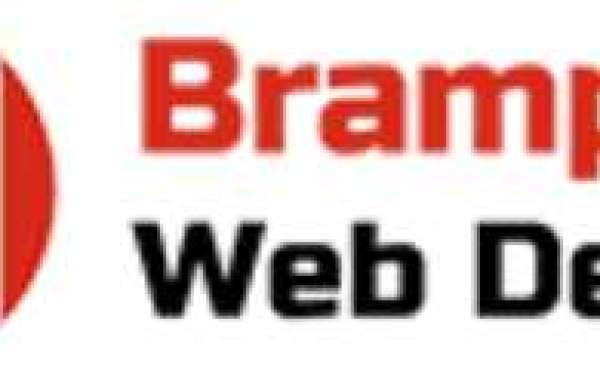Introduction to 1099 Forms
Navigating the world of taxes can feel like walking through a maze, especially for freelancers and contractors. If you receive income as an independent worker, you're likely familiar with the self-employed 1099 tax form. These forms serve as key documents that report your earnings from various sources outside traditional employment. But did you know that how much you earn on these forms can significantly impact your tax bracket? Understanding this relationship is crucial for managing your finances effectively.
As more people embrace gig economies and self-employment opportunities in places like Camden or Manning, knowing how to handle 1099 income becomes essential. In this blog post, we'll explore what tax brackets are all about and how they interact with 1099 forms. Whether you're looking to minimize your taxable income or simply want clarity on reporting requirements, we’ve got valuable insights to help you navigate this complex landscape with confidence.
What is a Tax Bracket and How Does it Work?
A tax bracket is a range of income that determines the rate at which your earnings are taxed. The U.S. operates on a progressive tax system, meaning as you earn more, you may fall into higher brackets with increased rates. Each bracket has its own tax percentage. For instance, if you're in the 12% bracket and make $50,000 annually, only a portion of your income gets taxed at that rate; not every dollar is subject to it.
Understanding how these brackets work can help taxpayers strategize their finances effectively. When earning additional income—like from self-employed 1099 forms—you might inadvertently push yourself into a higher bracket.
This shift can result in paying significantly more taxes than anticipated if you're unprepared for the change in your financial landscape. Knowing where you stand helps manage expectations and plan for future expenses better.
Types of 1099 Forms and Their Tax Implications
The IRS uses various 1099 forms to track income that isn’t classified as wages, salaries, or tips. Understanding the types of 1099 forms and their tax implications can help you report your income accurately and avoid penalties. Below are some common types of 1099 forms and how they may affect your tax return.
1. 1099-NEC (Non-Employee Compensation)
The 1099-NEC is used to report payments made to independent contractors, freelancers, and other self-employed individuals for services performed. If you receive a 1099-NEC, it means you were paid at least $600 by a business for your work.
Tax Implications:
· You must report the income on Schedule C when filing your taxes. This will contribute to your taxable income, potentially pushing you into a higher tax bracket.
· You'll also need to pay self-employment taxes (Social Security and Medicare) on this income, which is 15.3% of your net earnings, unless deductions are applied to lower the amount.
· You can claim business expenses to offset your taxable income, reducing your overall tax burden.
2. 1099-MISC (Miscellaneous Income)
Before 2020, 1099-MISC was used to report non-employee compensation, but now it covers a variety of income sources. Some common uses include reporting rent, prizes, awards, or income from legal settlements.
Tax Implications:
· Box 1 of the 1099-MISC reports rental income, which is subject to income tax but can be reduced by deducting rental expenses.
· Income from prizes, awards, or legal settlements in Box 3 is fully taxable and could push you into a higher tax bracket.
· Payments for medical and health care services or other non-employee compensations may also increase your tax liability depending on the amount received.
3. 1099-INT (Interest Income)
Banks, credit unions, and other financial institutions issue 1099-INT forms when you earn $10 or more in interest during the year. This is typically from savings accounts, certificates of deposit (CDs), or bonds.
Tax Implications:
· Interest income is taxable at your ordinary income rate, which could impact your tax bracket, especially if you earn significant interest from multiple sources.
· Even if the interest amount seems small, it must still be reported, and failure to do so could result in penalties.
4. 1099-DIV (Dividends and Distributions)
The 1099-DIV form reports dividends paid by stocks, mutual funds, or other investments. It also includes capital gains distributions from mutual funds and REITs (Real Estate Investment Trusts).
Tax Implications:
· Dividends can be qualified or ordinary. Qualified dividends are taxed at the lower capital gains rate, while ordinary dividends are taxed as regular income, possibly pushing you into a higher bracket.
· Capital gains distributions reported on this form may also increase your taxable income but could qualify for preferential tax rates if held long-term.
How 1099 Forms Can Push You into a Higher Tax Bracket
Receiving a 1099 form can be exciting, especially when it signals income from freelance work or side gigs. However, that extra cash might come with an unexpected consequence: pushing you into a higher tax bracket.
Tax brackets are structured progressively. This means as your taxable income increases, so does the percentage of tax you owe. If you're self-employed and earning substantial amounts reported on your 1099 tax form, it could elevate your overall income significantly.
The shift in your tax bracket not only affects how much you pay but also may change eligibility for certain credits and deductions. It’s crucial to track this increase closely.
Being aware of how close you are to each threshold helps manage expectations during filing season. Understanding these dynamics is essential for effective financial planning throughout the year.
Strategies for Lowering Your Tax Bracket with 1099 Income
Managing your tax bracket when you receive a self-employed 1099 tax form can be challenging. However, several strategies exist to help minimize your taxable income.
First, consider maximizing your deductions. Keep track of all business-related expenses like equipment purchases and office supplies. These can significantly reduce the amount of taxable income reported on forms for 1099 contractors in Manning.
Next, contribute to retirement accounts. Options such as a SEP IRA or Solo 401(k) allow you to save for retirement while lowering your current taxable income simultaneously.
Also, don’t overlook health savings accounts (HSAs). Contributions are tax-deductible and can provide an additional avenue for reducing what you owe come April.
Consult with a tax professional familiar with 1099 tax form in Camden. They often have insights specific to your situation that could yield further savings or opportunities to lower your overall tax liability.
Common Mistakes to Avoid When Filing Taxes with 1099 Forms
Filing taxes with 1099 forms can be tricky. Many self-employed individuals overlook crucial details that could lead to costly mistakes.
One common error is failing to report all income. Every dollar earned matters, especially when it comes from multiple sources. Ignoring any 1099 received can raise red flags with the IRS.
Another mistake involves misclassifying expenses. Accurate categorization of your deductions maximizes tax benefits. Mixing personal and business expenses often results in disallowed claims.
Many forget about estimated tax payments as well. If you’re earning income via a 1099 tax form, setting aside money quarterly prevents a hefty bill at year's end.
Not keeping proper records leads to chaos during filing season. Organizing receipts and documentation simplifies the process and ensures you don’t miss out on potential deductions or credits while preparing forms for 1099 contractors in Manning or anywhere else.
Estimated Tax Payments: Do You Need to Make Them?
If you receive income through 1099 forms, such as from freelance work, contract jobs, or other self-employment income, you may be responsible for making estimated tax payments. Unlike W-2 employees whose taxes are withheld by their employers, 1099 workers are responsible for paying their own income taxes, Social Security, and Medicare taxes. This is where estimated tax payments come in. Here’s what you need to know:
1. What Are Estimated Tax Payments?
Estimated tax payments are quarterly payments made to the IRS throughout the year to cover income that isn’t subject to automatic withholding. These payments help you stay current on your tax obligations and avoid a large tax bill when you file your annual tax return.
Estimated tax payments typically cover:
· Federal income tax
· Self-employment tax (Social Security and Medicare)
· State and local income taxes (in applicable states)
2. Who Needs to Make Estimated Tax Payments?
You need to make estimated tax payments if both of the following apply:
· You expect to owe $1,000 or more in taxes when you file your return.
· Your income taxes are not sufficiently withheld through other means, such as W-2 withholding from an employer or other withholding mechanisms.
Generally, the people who need to make estimated tax payments include:
· Freelancers, independent contractors, and gig workers
· Small business owners
· Landlords with significant rental income
· Individuals with investment income (e.g., dividends, capital gains)
3. How Do You Calculate Estimated Tax Payments?
To figure out how much to pay, you should:
· Estimate your total income for the year, including 1099 income.
· Subtract any deductions and credits you may be eligible for, such as the standard deduction, business expenses, or retirement contributions.
· Calculate your tax liability based on your estimated taxable income. This will include both income tax and self-employment tax (which is 15.3% of net earnings from self-employment).
The IRS provides Form 1040-ES to help calculate estimated tax payments. You’ll divide the total tax liability by four to determine how much to pay each quarter.
4. When Are Estimated Tax Payments Due?
Estimated tax payments are due four times a year:
· April 15 for income earned from January 1 to March 31
· June 15 for income earned from April 1 to May 31
· September 15 for income earned from June 1 to August 31
· January 15 of the following year for income earned from September 1 to December 31
It’s essential to meet these deadlines, as late or missed payments may result in penalties.
5. Consequences of Not Making Estimated Payments
Failing to make estimated payments can lead to:
· Underpayment penalties: The IRS can charge penalties if you haven’t paid enough tax throughout the year. This applies even if you pay your total tax bill by the April 15 deadline.
· Large lump-sum payment: Without making estimated payments, you might face a huge tax bill at the end of the year, which can be financially stressful.
To avoid penalties, the IRS expects you to pay at least 90% of your current year’s tax liability or 100% of the previous year’s tax liability, whichever is smaller.
Importance of Properly Reporting 1099 Income
Properly reporting 1099 income is crucial for several reasons. First, the IRS receives a copy of every 1099 form you receive. If your reported income doesn’t match their records, it can trigger an audit or penalties.
Accurate reporting also helps you avoid unexpected tax liabilities down the road. Underreporting your earnings may seem tempting, but it ultimately leads to more stress when tax time arrives.
On top of that, showing consistent and correct income can benefit future financial endeavors. Lenders often look at your reported income when considering loans or mortgages. A clean record reflects well on your reliability as a borrower.
Moreover, understanding how to report self-employed 1099 tax forms correctly ensures you claim all eligible deductions. This knowledge allows you to maximize savings while staying compliant with tax laws in Camden or Manning regions.
Taking the time to ensure accuracy pays off significantly in both ease and peace of mind during filing season.
Conclusion
Understanding how 1099 forms impact your tax situation is crucial, especially for self-employed individuals. Being aware of your tax bracket can help you make informed financial decisions throughout the year.
Receiving a 1099 form means you're earning income that needs to be reported—not just for compliance but also because it could influence your overall tax burden. If you're in Camden or Manning and work as a contractor, grasping the nuances of reporting these earnings with the correct forms is essential.
There are proactive steps you can take to manage and potentially lower your taxable income from 1099 sources. From deductible business expenses to retirement contributions, each strategy can play a pivotal role in keeping you within a favorable tax bracket.
Avoid common filing pitfalls by ensuring all information on your 1099s aligns with what you've reported on your taxes. Properly documenting and accounting for this income sets you up not just for peace of mind but also optimal financial health.
Navigating taxes may seem daunting at times, but being equipped with knowledge about how self-employment affects taxation makes it manageable—and even beneficial—for long-term financial planning. Keep yourself updated and ensure you're leveraging every possible advantage when dealing with those forms for 1099 contractors in Manning or anywhere else.










